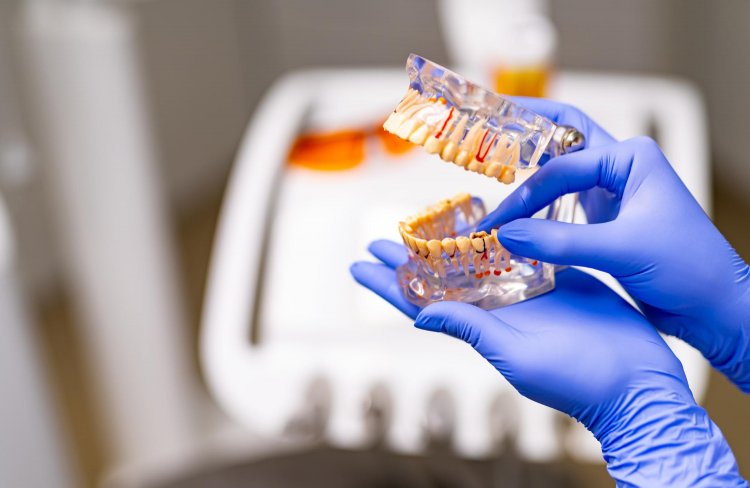Eradicating Plaque, Preserving Smiles: A Comprehensive Guide
Dental plaque, a complex biofilm comprising bacteria, saliva, and food particles, poses a significant challenge to oral health worldwide. This comprehensive guide delves deeply into the multifaceted aspects of dental plaque, elucidating its causes, symptoms, diagnostic techniques, treatment modalities, prevention strategies, and effective management approaches.

Understanding Dental Plaque
Dental plaque, an intricate matrix of microorganisms embedded in a polysaccharide-rich extracellular matrix, forms continuously on tooth surfaces. Despite being initially colorless and inconspicuous, plaque can evolve into a visible and tenacious film due to the accumulation of microbial colonies and dietary residues.
Causes of Dental Plaque Formation
The genesis of dental plaque is intricately linked to the interplay between oral bacteria, fermentable carbohydrates, and host factors. Oral bacteria metabolize dietary sugars and starches, fermenting them into acids that demineralize tooth enamel and create an environment conducive to plaque colonization. Poor oral hygiene practices, along with factors such as saliva composition and genetic predisposition, further exacerbate plaque formation.
Symptoms and Clinical Manifestations
Dental plaque manifests through a spectrum of clinical signs and symptoms, including:
- Sensory perception of a slimy or fuzzy coating on tooth surfaces
- Persistent halitosis (bad breath) attributed to bacterial metabolism and volatile sulfur compounds
- Gingival inflammation, characterized by erythema, edema, and bleeding upon probing or brushing
These manifestations signify the onset of plaque accumulation and underscore its potential to precipitate more severe oral pathologies if left unchecked.
Diagnosis and Assessment Techniques
Accurate diagnosis of dental plaque necessitates a multifaceted approach encompassing visual examination, tactile assessment, and adjunctive diagnostic aids. Dentists employ specialized instruments, such as explorers and periodontal probes, to detect plaque deposits and assess their extent. Disclosing agents, disclosing tablets, or plaque-disclosing solutions serve as invaluable aids in highlighting plaque-retentive areas for comprehensive evaluation.
Treatment Modalities and Therapeutic Interventions
Effective management of dental plaque entails a tailored treatment regimen tailored to the individual's unique oral health needs. Primary treatment modalities include:
- Professional dental cleaning, encompassing scaling, root planing, and polishing to remove plaque and calculus deposits
- Application of antimicrobial agents, such as chlorhexidine or essential oils, to mitigate bacterial proliferation and plaque accumulation
- Prescription of fluoride-containing products to enhance remineralization and inhibit caries progression
- Implementation of adjunctive therapies, including dental sealants and antimicrobial mouth rinses, to augment plaque control measures
Preventive Strategies and Lifestyle Modifications
Prevention constitutes the cornerstone of plaque management, emphasizing proactive oral hygiene practices and lifestyle modifications. Key preventive strategies encompass:
- Diligent adherence to a structured oral hygiene regimen, encompassing twice-daily brushing with fluoridated toothpaste and daily interdental cleaning with floss or interdental brushes
- Adoption of a balanced diet low in fermentable carbohydrates and rich in fibrous fruits and vegetables to mitigate plaque formation
- Regular dental visits for comprehensive oral examinations, prophylactic cleanings, and personalized oral health counseling
Prognosis and Long-term Outlook
The prognosis for individuals with dental plaque hinges upon their commitment to sustained oral hygiene practices and ongoing professional dental care. With vigilant adherence to preventive measures and prompt intervention, the progression of plaque-associated complications, including dental caries, periodontal disease, and tooth loss, can be mitigated, thereby fostering long-term oral health and well-being.
Living With Dental Plaque
Living with dental plaque necessitates proactive engagement in self-care practices and collaborative partnership with dental professionals. Individuals are encouraged to cultivate a keen awareness of their oral health status, promptly address any emerging concerns, and actively participate in preventive initiatives aimed at preserving dental integrity and enhancing overall quality of life.
#DentalPlaque #OralHealth #PreventiveDentistry #DentalCare #HealthySmile #DentalHygiene #OralHygiene #PlaqueFormation #OralBacteria #DentalTreatment #HealthyLiving #Wellness #DentalProblems #Dentistry #OralCare #TeethCleaning #BrushingAndFlossing #HealthyLifestyle #HealthyTeeth #DentalTips
Disclaimer:
The information provided in this article is for educational purposes only and should not be considered medical advice. If you have any health concerns or are experiencing symptoms, it is important to consult with a healthcare professional, such as a doctor or clinic, for proper diagnosis and treatment. Always seek the advice of your doctor or other qualified health provider with any questions you may have regarding a medical condition. Do not disregard professional medical advice or delay in seeking it because of something you have read in this article.
What's Your Reaction?





















